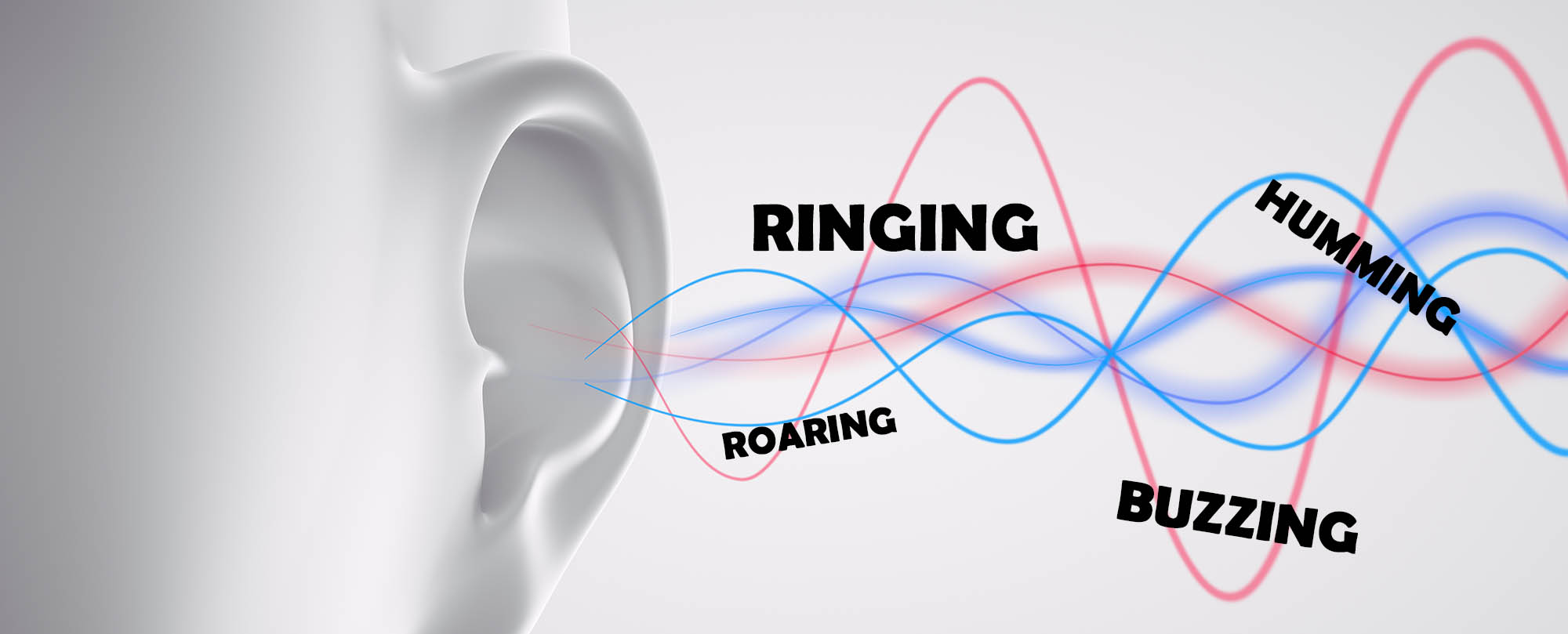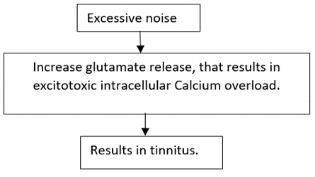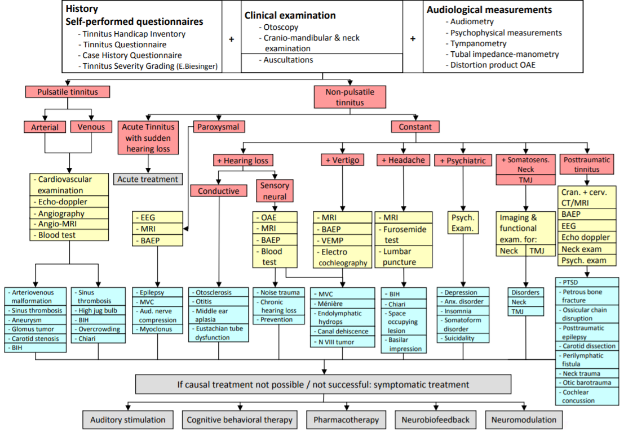
TINNITUS
- Afferent pathway-This provides input to the proximal structure of auditory system. This is predominantly excitatory.
- Efferent pathway-This modulates acoustic information. It is predominantly inhibitory.
Any pathological alteration at any one level may have functional consequence at the other levels of the auditory system. Tinnitus is the consequence of the aberrant spontaneous neuronal activity within the auditory system. It can be due to lesion or dysfunction at the level of cochlea to the uppermost level of the auditory system. Tinnitus related neuronal activity triggers feedback mechanism in order to balance between excitation and inhibition and preserve the homeostasis.
Tinnitus is characterized by process of habituation, so in most cases the tinnitus gradually attenuates. However, some fail to adopt to habituation leading to persistent tinnitus.



- Lateral olivocochlear efferent release endogenous opoid (Dysnorphins) in response to stress, at the inner hair cell synaptic region. This increases the sensitivity of Glutamate receptors (NMDA and Non-NMDA receptors) resulting in Stress induced tinnitus.
- Dopamine agonist (Piribedil) decreases the sensitivity of NMDA and Non-NMDA receptors resulting in reduced tinnitus.

- Irritative central lesions like tumors, vascular loop, stimulate tinnitus.
- Treatment by antiepileptics reduces tinnitus.
- Peripheral activation of somatosensory, somatomotor and visual motor system stimulates activation of extralemniscal polysensory pathway, resulting in tinnitus. Patient have a gaze evoked tinnitus, jaw clinching, electrical stimulation of median nerve.

- Stress results in increase in Catecholamines (adrenalin and nor adrenalin) by stimulating synaptic adrenocortical system.
- Stress results in increase glucocorticoids (cortisol) by stimulating hypothalamopituitory- adrenocortical system. Increased level of cortisol is related to tinnitus.
- Lateral olivocochlear efferent release endogenous opoid (Dysnorphins) in response to stress, at the inner hair cell synaptic region. This increases the sensitivity of Glutamate receptors (NMDA and Non-NMDA receptors) resulting in Stress induced tinnitus.
- Dopamine agonist (Piribedil) decreases the sensitivity of NMDA and Non-NMDA receptors resulting in reduced tinnitus.

- Treatment of underlying disorders– In the majority of cases of pulsatile tinnitus underlying pathology can be identified thus allowing a direct treatment of the underlying cause.
- Surgical treatment of tinnitus– auditory nerve section, or cochlear destruction, have provided little evidence of effectiveness and may even make tinnitus worse.
- Tinnitus retraining therapy– The TRT implements a habituation-based protocol which includes sound therapy and cognitive-behavioral techniques (CBT).
- Instrumentations-a. Hearing aids are the first line in management for patients with tinnitus and hearing loss. Hearing aids may reduce awareness of tinnitus by amplification of external sounds.b. Cochlear implants in patients with profound hearing loss have been found useful in abolishing/reducing tinnitus in a significant number of cases.
- Noise generators– Sound therapy is currently an essential part of treatment of tinnitus. Tinnitus maskers are wearable behind-the ear or in the-ear devices, used for presentation of sounds in a controlled manner in order to reduce or eliminate the perception of tinnitus.
- Pharmacological treatments– pharmacological treatment has a limited contribution to the treatment of tinnitus. Pharmacological treatment on hypothetical underlying mechanisms includes:a) Antidepressants like Tricyclic antidepressants, nortriptyline and amitriptyline.
b) GABA analogues- GABA A (benzodiazepines and gabapentin) and GABA B (baclofen) analogues.
c) Ca ++ channel antagonists like Nimodipine, Flunarizine.
d) Antiepileptics like Carbamazepine.
e) Selective glutamate receptor antagonist like Caroverine.
f) Prostaglandin analogues. Prostaglandins act as neuromodulators of the afferent pathway within the cochlea.
g) Lidocaine- Lidocaine is one of the most intriguing drugs used in controlling tinnitus and, probably, the most effective one. Lidocaine is known to be a sodium channel blocker which operates most efficiently in nerves with the high discharge rates, through its capacity to reduce the maximum firing rate of the nerve. The trans-tympanic application has been reported to be successful with less systemic side effect.
- Supplementary treatments include electrical or magnetic stimulation, Ginkgo biloba, Vitamin B12, acupuncture or zinc.
We Are Always Ready to Help You.
Book An Appointment

